Asian Clam (Corbicula fluminea)
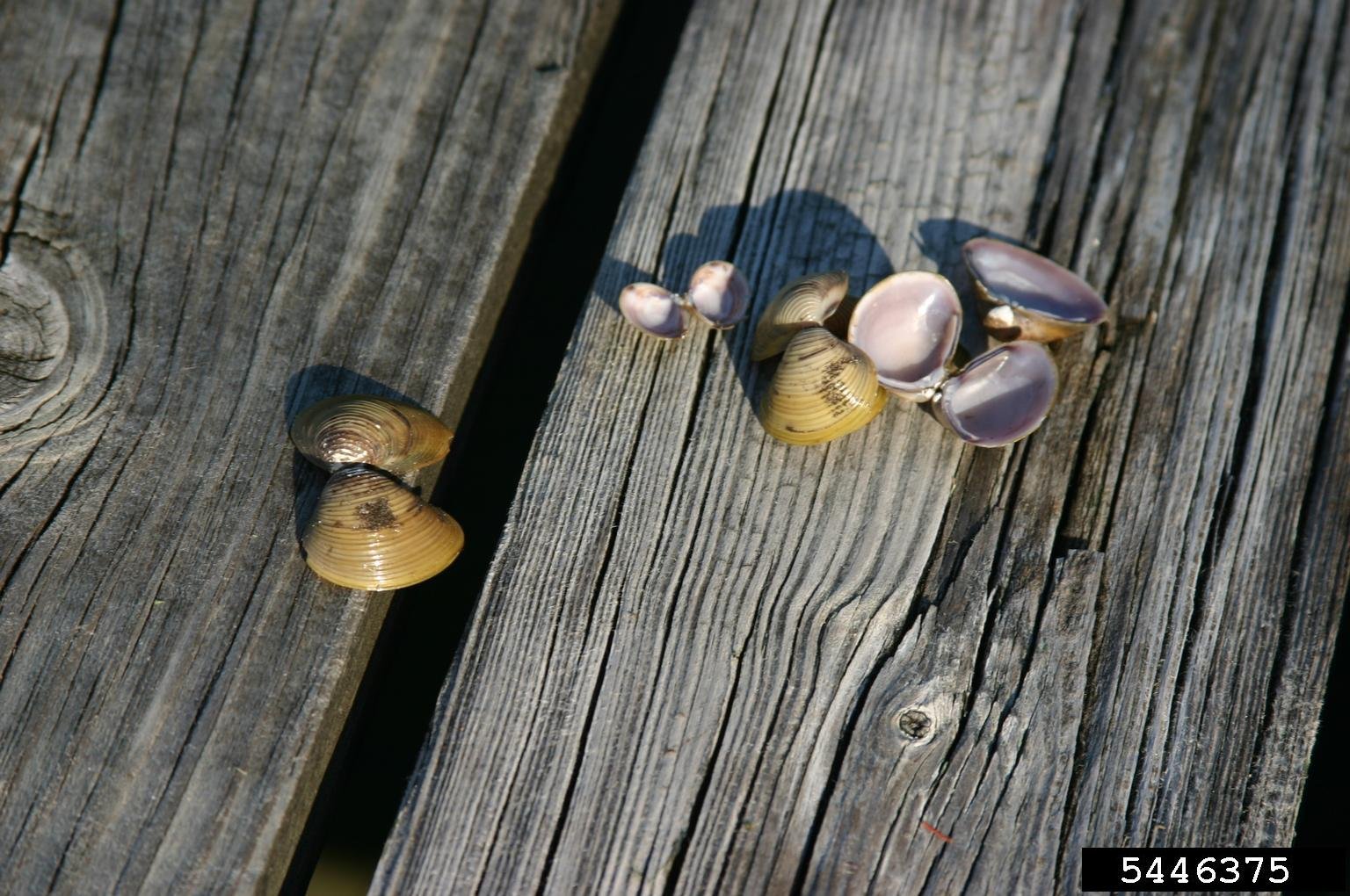
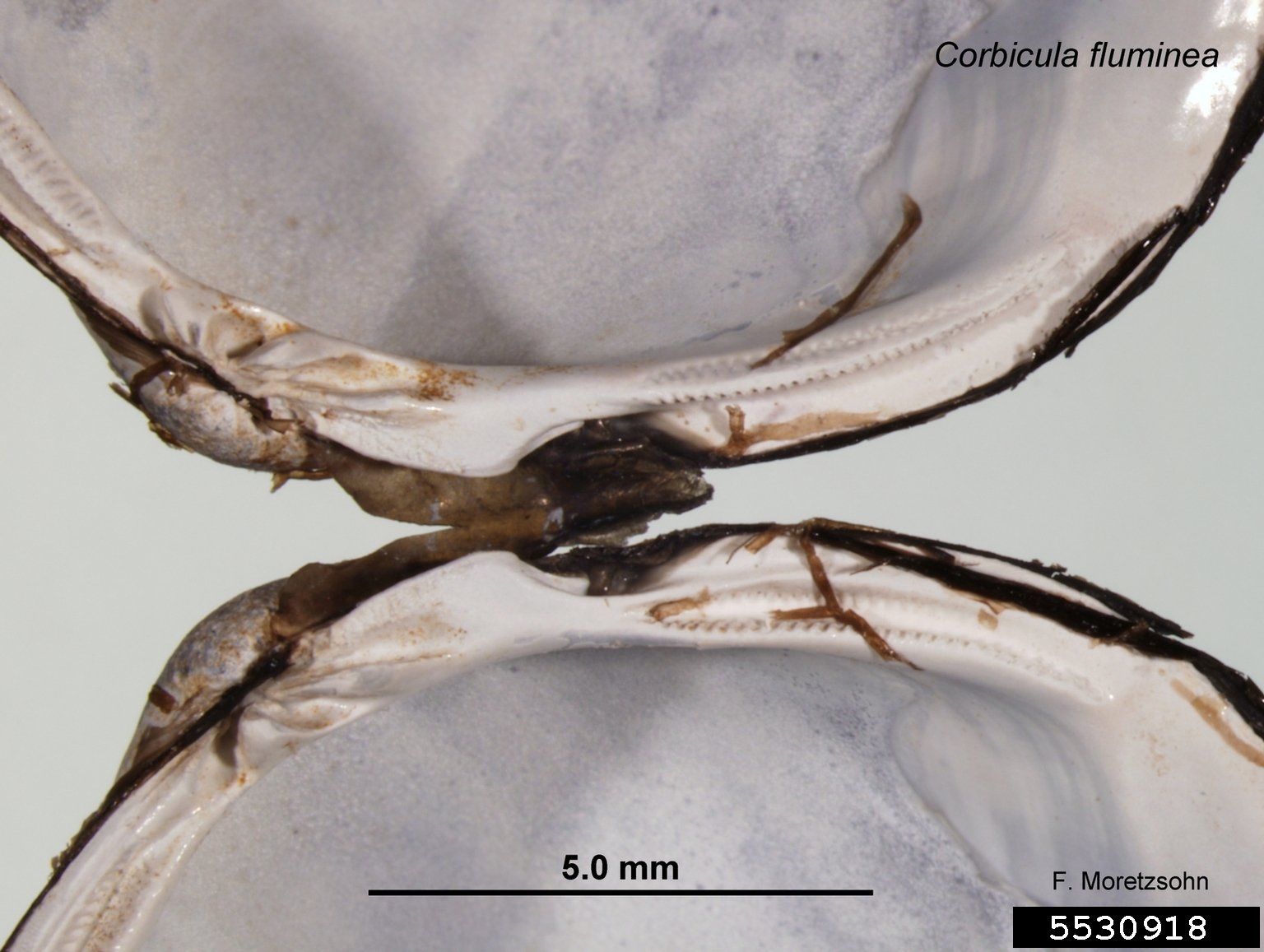
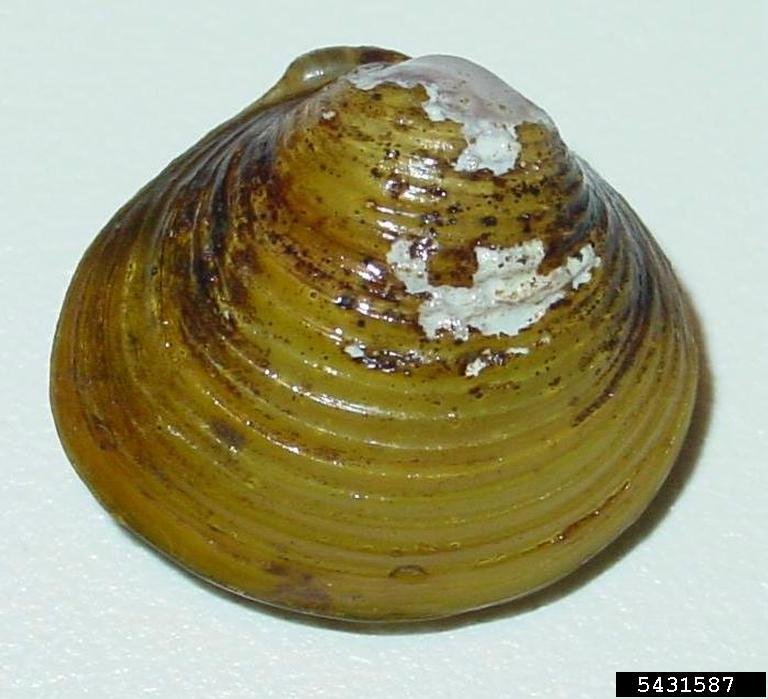
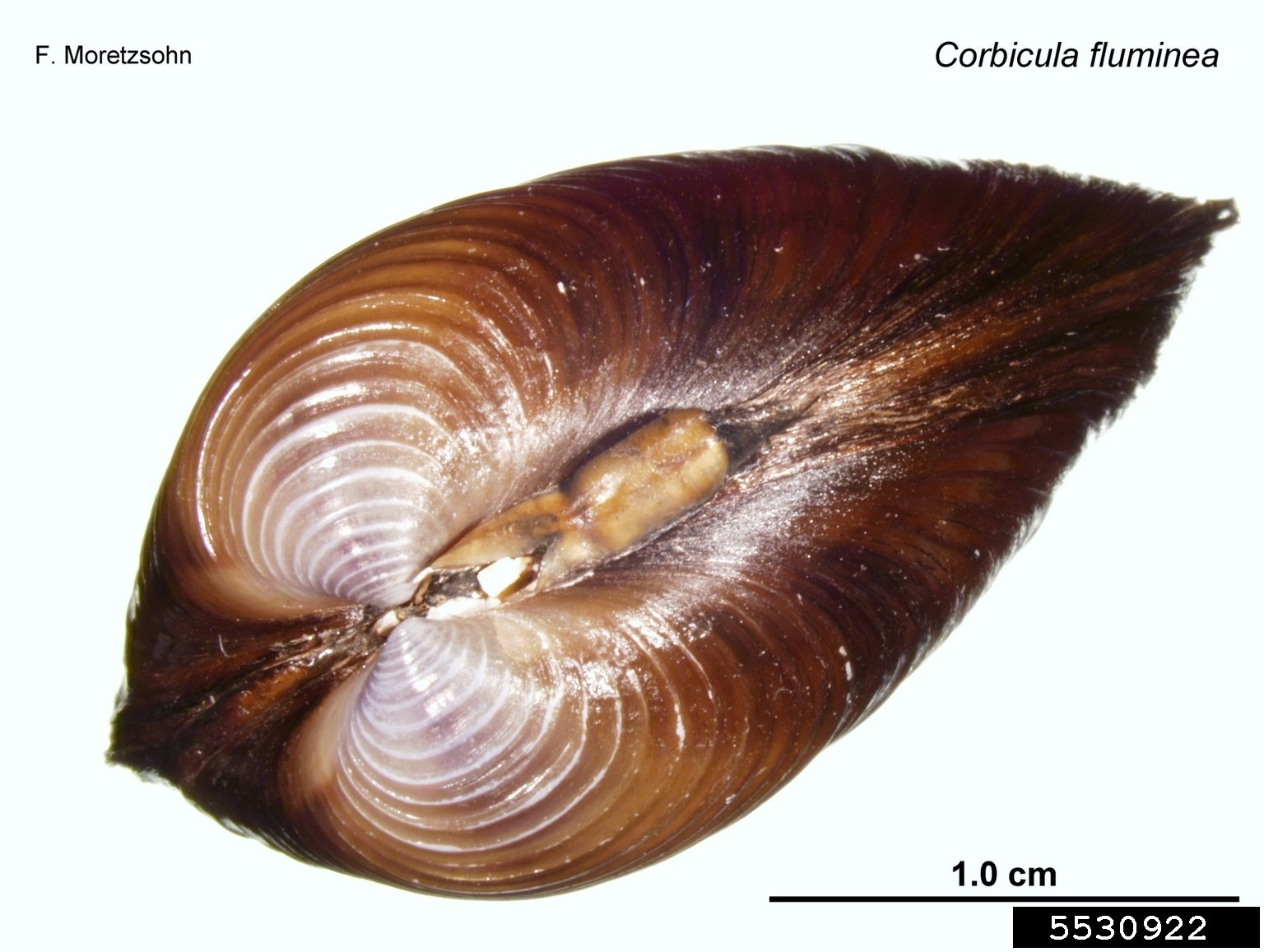
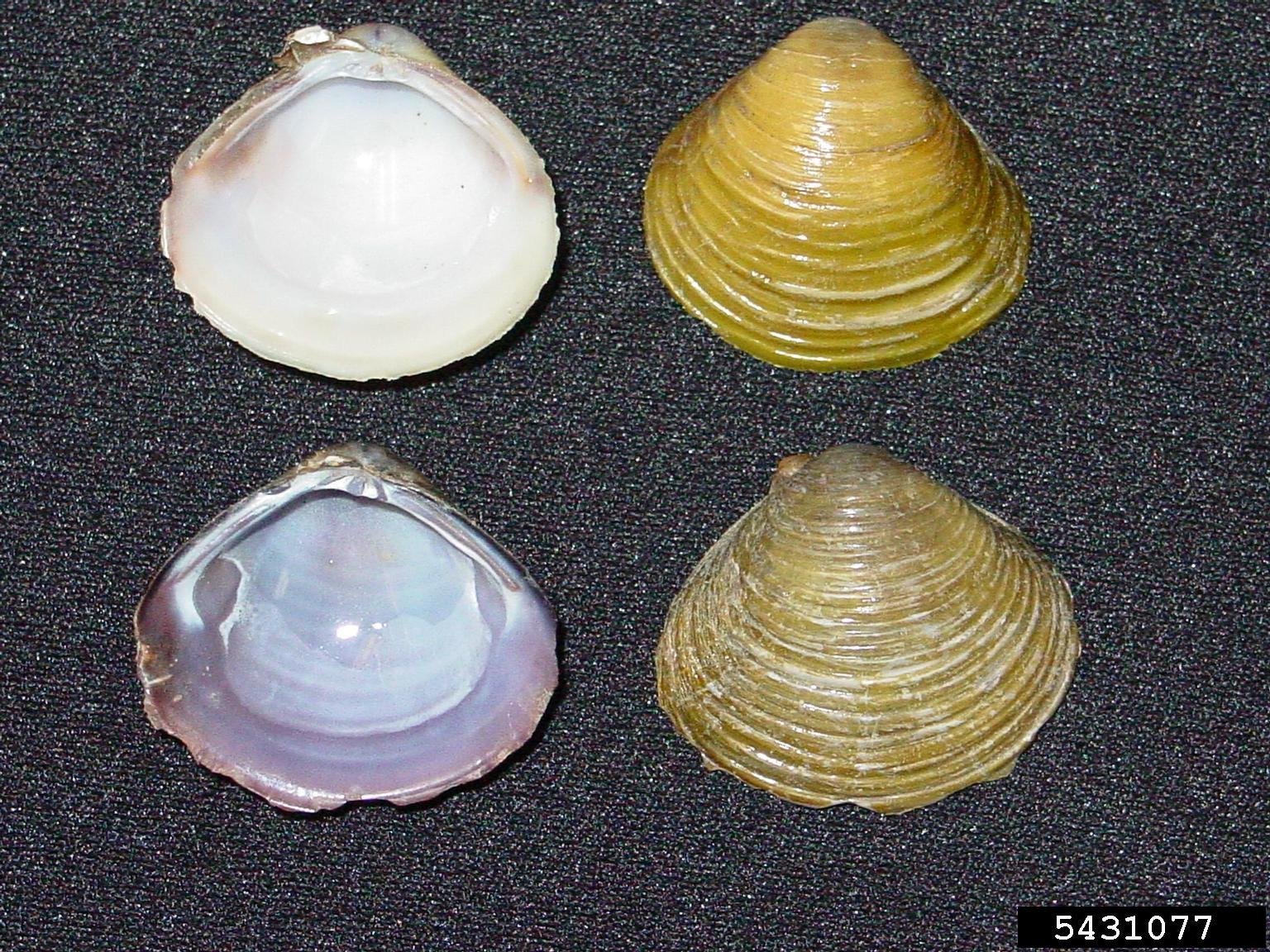
Key Identification Features
Yellow to tan rounded shell
Distinct raised ridges on shell
Toothed hinge
Description
Asian clams are small bivalves approximately 2” or smaller. They resemble marine clams and native pea clams but are easily distinguished from native pea clams by the raised growth ridges on their shells. Their color is highly variable, ranging from bright, straw-colored yellow to dull grey-brown. More work is needed to distinguish if this is a result of genetic plasticity or undescribed species.
The insides of the shell vary from white to saturated purple nacre. The teeth are distinct and finely serrated.
Native Range
Asian clams are native to not only Asia but Africa, Australia, and many Southeast Asian Islands. It is commonly consumed in some Asian countries and may have first been introduced to the U.S. as such.
How did it get here and where is it now?
It was originally found in Washington in the 1930s and has since spread, though the mechanism of its spread is poorly understood. It has gained popularity in aquariums and can be found sold under a myriad of common names.
Habitat and Dispersion
Corbicula are generalists and can be found in a variety of aquatic habitats. Like most bivalves, Asian clams are filter feeders, feeding on algae and small particulates in the water column and thrive in turbid, eutrophic waters.
Asian clams are hermaphrodites and can reproduce rapidly. The larvae are microscope and easily transported in small amounts of water. The adults have also been observed to survive passing through the digestive tracts of multiple fish and bird species.
Best Management Practices
Once Asian clams have entered a water body, they are difficult to eliminate. Hand harvesting can work if caught early enough, but large infestations are hard to manage. Benthic mats have been employed in Lake George and other lakes, but with limited success. They do not tolerate freezing temperatures though and can have large die-offs during winter if conditions are right.

